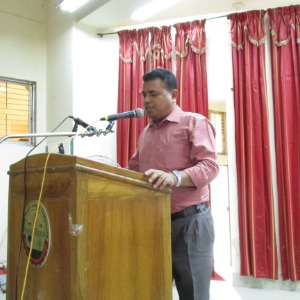Effect of Climate Change and Salinity Intrusion on Agriculture and Socio-Economic Condition of Bhola District, Bangladesh. Project Selected by the Jashore University of Science and Technology, Jashore 7408, Fiscal Year: 20118-19 (Current Project).
Day-by-day climate is being changed abruptly and seriously in the world. The changing climate affects the different parts of world. Bangladesh is one of the worst affected countries, facing the early impacts of climate change particularly in coastal region. A significant part of the coastal region is threatened by salinity intrusion and submersion due to sea level rise, caused by climate change. The coastal areas of Bangladesh are specifically prone to salinity intrusion, water-logging, sea level rise, tidal surge, river bank erosion, soil salinity, flood, heavy rainfall and cyclones by the root source of climate change. The upstream reduction of natural water flow is contributing to increasing level of salinity problem in coastal areas of Bangladesh. Both water and soil salinity has increased in an alarming rate during the last couple of decades in the South-western, South-middle and South-eastern parts of Bangladesh. Saline water intrusion into the inland fresh water sources is causing severe threat to the lives of the species living around the world’s greatest mangrove forest, the Sundarbans. Moreover, rapid growth of unplanned brackish water shrimp cultivation seals off the capacity of natural resistance against increased level of water and soil salinity.
About 2,86,090 ha land in Barisal, Jhalokathi, Pirojpur, Patuakhali and Borguna is affected by varying degree (2 – 16 dS/m) of soil salinity, cause by climate change. Usually intensity of soil salinity increases with the closer vicinity of coast. Soil salinity in Barisal region, like most of the saline soils of Bangladesh, is attributed to either intrusion of sea water through underground or saline water of the coastal rivers. Water quality of the coastal rivers in Barisal region is poorly understood. There are several reasons why about 35% of land in Barisal region remains fallow during Rabi season. Soil and water salinity is one of the major causes. Most of the fallow lands in Rabi season may be brought under Boro cultivation subjected to the availability of non-saline water for irrigation. Application of non-saline water irrigation, salinity of soil may be equilibrated to less than 4 dS/m, thus the soil becomes suitable for Boro cultivation. There is an example of using non-saline underground water to grow Boro rice in Satkhira (Saleque et al, 2005). There were some data available about the salinity intrusion and its impacts on crops and soils in different Districts of Barisal Division, but there are hardly data available regarding Bhola District.

